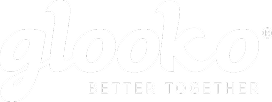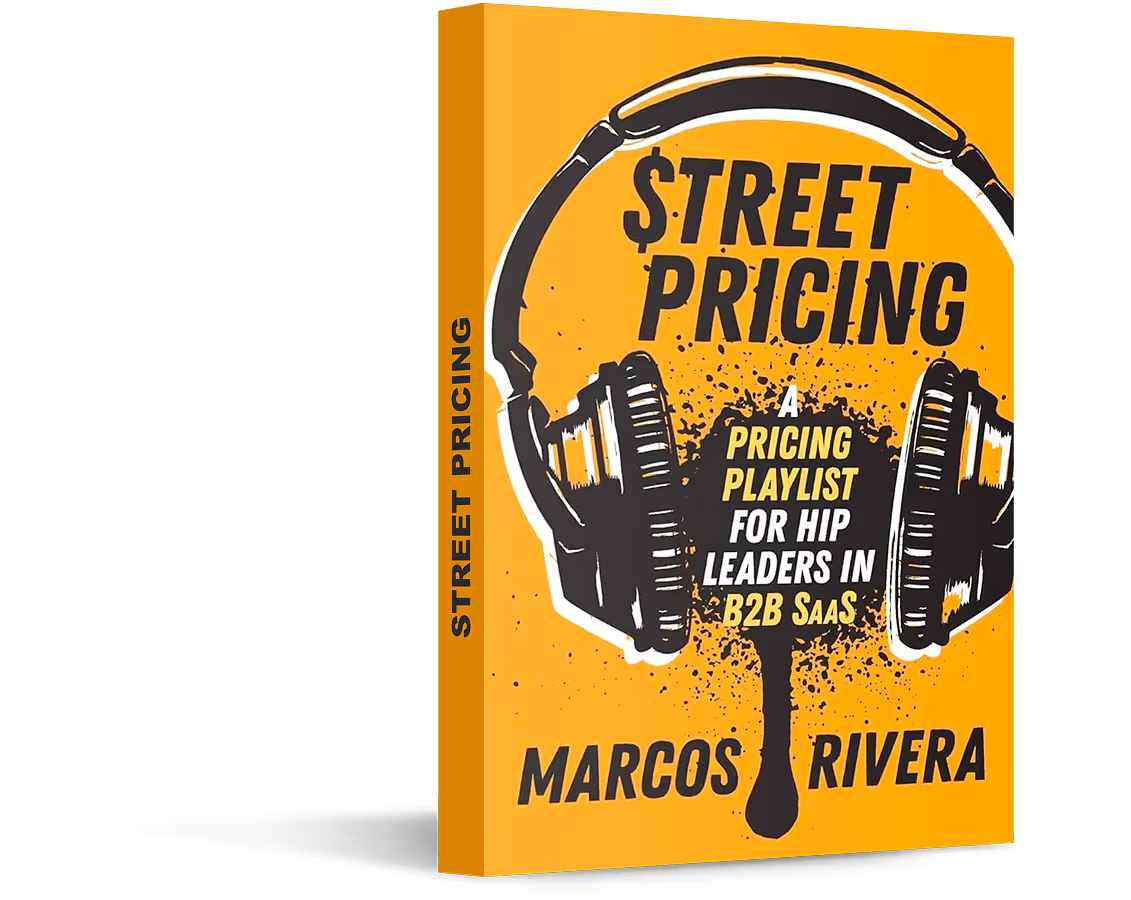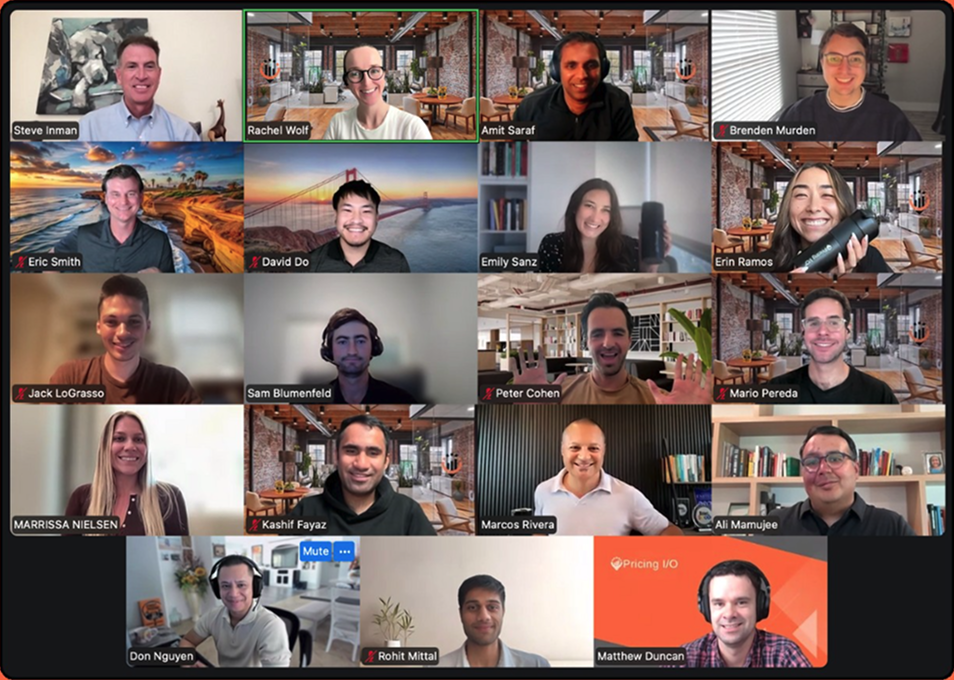The B2B SaaS Pricing Firm That Builds With You
True collaboration on pricing your customers will love and your team will champion, not black box studies that collect dust.



Trusted by










































































































































SaaS clients
Client satisfaction rate
Average ROI in year one


What happens when pricing strategists roll up their sleeves with you



Unlock stronger pricing in
3 simple steps

Discover
Our SaaS pricing strategists cut through the noise and dig into your sales, customer, and market data to uncover value drivers and hidden revenue opportunities.

Design
Together we create and test a pricing model, then map a rollout plan your leadership team supports.

Defend
Roll out with confidence, validate in-market, and train your team to manage pricing going forward.

Everything you need to get pricing right
As dedicated SaaS pricing strategists, we roll up our sleeves to build and launch your new pricing, and give your team the playbook to manage and optimize it moving forward.


Navigate the AI-driven shift in SaaS pricing
AI is changing how SaaS delivers value, and legacy seat-based models no longer fit. We help you design and launch pricing that aligns with customer outcomes, scales across PLG and SLG motions, and becomes a competitive edge.

Get leadership and customer buy-in
Misaligned execs and skeptical boards can kill good pricing. We guide your leadership team through the process, build consensus, and give you the tools to defend pricing decisions with confidence.

Turn your tiers into revenue drivers
Throwing features into packages at random leaves money on the table. We create packaging that reflects customer value, encourages upgrades, and drives expansion revenue.

Simplify your pricing so sales can sell
Overly complicated models confuse sales teams and stall deals. We design clear structures and deal processes that make it easy for customers to buy and your team to sell with confidence.

Test pricing before you roll it out
Launching untested pricing is risky and can trigger pushback. We prototype changes with real customers so you know what will land before you go live.

Build pricing skills that last
Pricing isn’t a one-time project — and we’re not here to force you to hire us again. We train your team to use frameworks, benchmarks, and processes so they can keep pricing aligned as your business grows.

Turning pricing challenges into growth opportunities
From boardroom debates to customer adoption, better pricing drives better results.
Build a pricing model
Replace guesswork with proven SaaS frameworks that tie pricing to value.
Align leadership and board
End internal debates and secure buy-in with validated strategies.
Design packaging for expansion
Turn tiers into upgrade paths that boost adoption and revenue.

Trusted by hundreds of SaaS companies worldwide
From high-growth, investor-backed companies to vertical platforms and cloud apps, we’ve helped 400+ teams build pricing that drives results. Don’t take our word for it — see what happens when real SaaS teams stop guessing and start pricing with confidence.
Street Pricing, noun :
An anti-gatekeeping philosophy of open-sourcing proven pricing strategies.Whether through his book, podcast, or YouTube channel, learn firsthand from Marcos Rivera, founder of top monetization firm Pricing I/O. Marcos has helped SaaS leaders worldwide identify the right strategies to unlock growth – and you can, too.



What we believe


Stay curious, take the lead, and help others — it’s the philosophy I learned from my mom while growing up in a one-bedroom apartment in the Bronx.
That mindset carried me through two decades as both a SaaS product exec and pricing leader, and ultimately led me to found Pricing I/O in 2019. I wanted to replace the guesswork that surrounds SaaS pricing with proven frameworks and help leaders capture the value they’ve built.
But Pricing I/O isn’t a one-man show. I’ve hand-picked and trained a team of SaaS pricing strategists, associates, and data scientists who bring the same no-BS approach to every client. Each engagement has a dedicated pod working in the trenches, while behind the scenes every recommendation is battle-tested by our senior strategists and myself.
You don’t get a lone consultant with a fancy title. You get our entire brain trust, reviewing every decision and tearing down bad ideas before they reach you. It’s fast, practical work that delivers results, not just decks.
We call this ethos “Street Pricing”. You can just call it really damn effective.
Ready to grow with confident pricing?
Let's start a conversation with our team that will deliver practical value even if you don't work with us.

Join +2,200 SaaS leaders
Get monthly pricing insights sent to your inbox. No spam, no fluff, just real talk about how you can level up your pricing.
Frequently asked questions
Most projects run 12–16 weeks, with short sprints possible in 3–4 weeks. We move from discovery → design → rollout, delivering a board-ready pricing model and playbook your team can run with.
Clients see measurable impact within the first year — often higher ARR, stronger retention, and faster sales cycles. For example, Xactly boosted unit pricing 58% and win rates 13% after working with us.
Our strength lies in customization. We don’t use templates. Every engagement starts with your data, goals, and customer inputs, then we customize frameworks and recommendations for your business model and growth stage.
Unlike big firms that drop a 200-slide deck and leave, we’re SaaS operators turned strategists. We roll up our sleeves, work alongside your team, and make sure pricing actually launches and sticks.


Still have questions?













